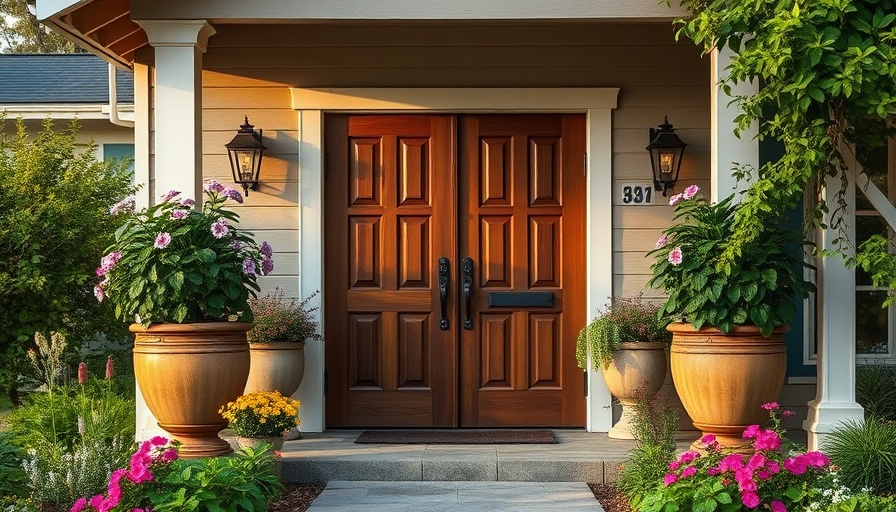
Creating a Sustainable Haven in Your Garden
The hospitable garden of Bonnie and David Thornton showcased during the Memphis Fling serves as a delightful inspiration for eco-conscious homeowners. Their garden is not only beautiful but is thoughtfully designed, demonstrating how sustainable home design can be interwoven with nature. This vibrant garden features a stunning array of flora, such as pink-and-lavender hydrangeas alongside burgundy Japanese maples, creating an inviting entrance that emphasizes the importance of color harmony in landscaping.
Embrace Eco-Friendly Gardening Techniques
What sets the Thorntons' garden apart is its commitment to ecological principles. The incorporation of perennials, like the ‘Rising Sun’ redbud, not only brings joy but also supports local pollinators. These plants thrive in our climate while requiring less water, aligning perfectly with water conservation efforts and reducing the need for synthetic fertilizers. By utilizing native and drought-resistant plant species, homeowners can create dazzling gardens that also respect and preserve the environment.
Design Elements that Promote Energy Efficiency
A key element of the Thorntons' garden is the strategic placement of shade trees, which provide natural cooling around their home. This thoughtful landscaping choice not only improves the home’s energy efficiency but also enhances outdoor livability, making spaces inviting for gatherings. A fire pit surrounded by Adirondack chairs not only adds charm but also encourages outdoor activity, reducing reliance on energy-consuming indoor entertainment.
Cultivating Zero-Waste Practices
Incorporating zero-waste practices within your garden can transform not only the environment but also your lifestyle. For instance, the Thorntons displayed a bottle tree, an inventive way to repurpose glass bottles while adding a whimsical touch to their outdoor oasis. This innovative approach encourages the practice of recycling and highlights the importance of reducing waste while enjoying a beautiful landscape.
Take Action: Your Path to Eco-Conscious Living
If you’re inspired by the vibrant yet eco-friendly design seen at the Thorntons’ garden, consider implementing similar practices in your own outdoor space. Start small with composting vegetable scraps or establishing a rain garden that helps with stormwater management. With every step taken towards sustainable gardening and landscaping, you contribute positively to the environment, making your home a healthier, more inviting place to live.
 Add Row
Add Row  Add
Add 




Write A Comment